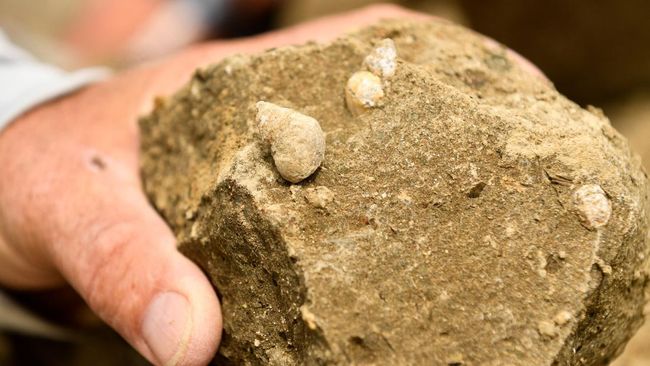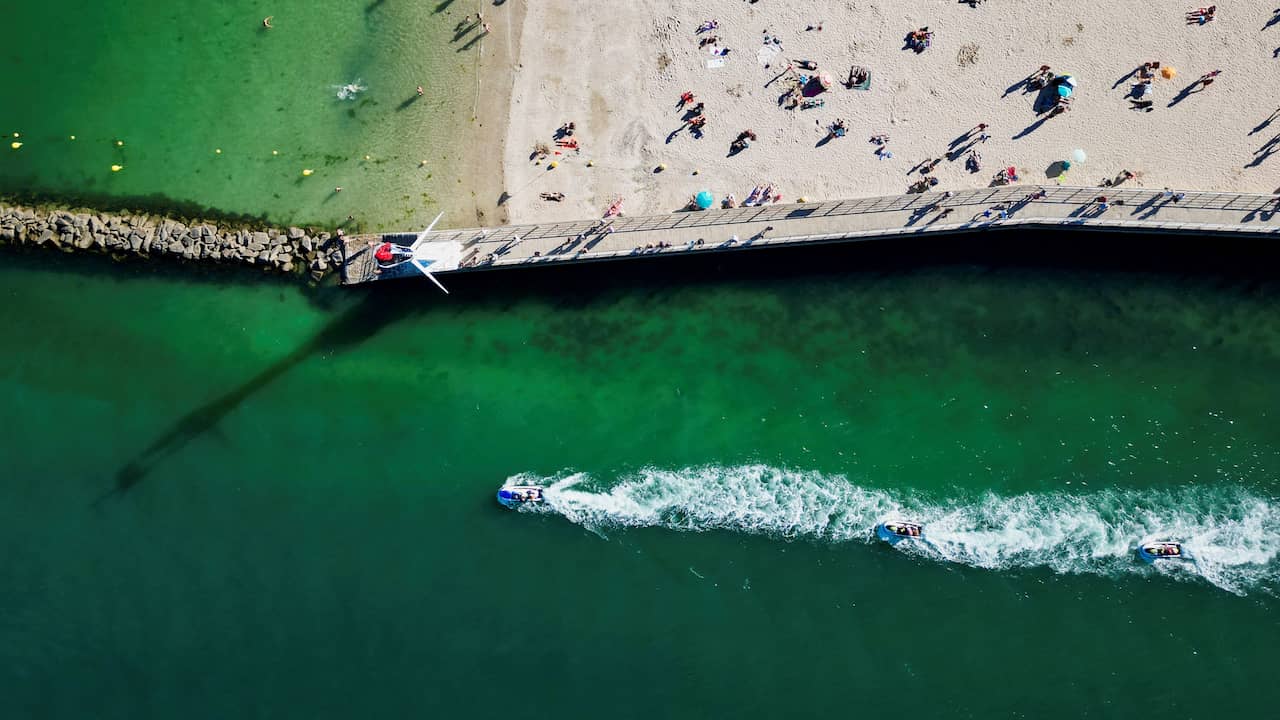Jakarta, CNBC Indonesia – Paleontologists have found fossilized bones of a mosasaur, an underwater lizard reptile, as high as 30 feet or about 9 meters in the state of Texas, United States (US).
Paleontologists from the Perot Museum of Nature and Science unearthed a mosasaur fossil near a river in northern Texas last July, according to The Dallas Morning News.
It is known that mosasaurs lived alongside dinosaurs during the Cretaceous period. They are reportedly closely related to living snakes and monitor lizards which include the 10-foot or 3-meter-tall Komodo dragon.
ADVERTISEMENT
SCROLL TO RESUME CONTENT
–
Excavations for the large skull, mandible and vertebrae of the mosasaur reportedly began in mid-July after someone named Stephen Kruse discovered the vertebrae near the North Sulfur River.
Kruse told local media that the fossil “just stood there, out of the wall” as he walked by the river.
Paleontologists use a variety of tools including shovels, pick, probe, and a brush for carefully cleaning fossils from rocks such as clay at the bottom of a river. Glue was also placed in the fractures to prevent the fossil from shattering when removed. The entire process reportedly took six days.
“It’s like a puzzle: The whole time you’re working, you never know where it’s going,” Perot museum’s paleobotany curator Dory Contreras told Dallas Morning News quoted Newsweek.
“So when you dig further back, you find more, you find more fossils,” he added.
As of now, the museum team has not finished excavating all the fossils and hopes to return to the riverbed to complete the project this fall. The fossil-rich North Sulfur River has also been the site of previous mosasaur discoveries.
Dr. Ron Tykoski, director of paleontology at the Perot museum, said much of Texas was a beautiful place for large marine predators like mosasaurs when the fossils they found were still alive.
The Mosasaur was an aggressive carnivorous lizard comparable to modern apex predators such as the great white shark or killer whale.
Although aquatic, mosasaurs breathed air and sometimes needed to come to the surface to inhale like whales or turtles. Their diet consisted mostly of marine life which included turtles, fish, seabirds and large plesiosaur reptiles.
Mosasaurus became extinct during the mass extinction event, which also wiped out non-avian dinosaurs, about 66 million years ago. The general consensus among scientists is that damage from large asteroids triggered extinctions, destroying their environment with long, harsh winters, which hindered photosynthesis and deprived them of food sources.
(tfa/luc)
–


